#Long Meadow Ranch - Rutherford Estate
Photo
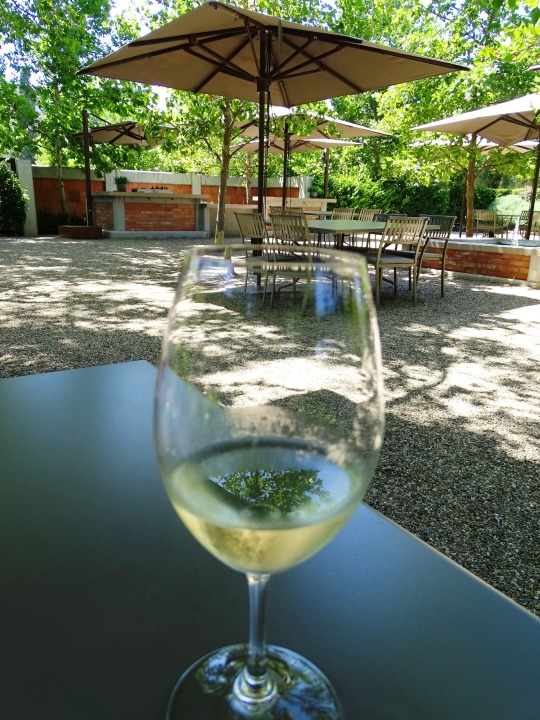







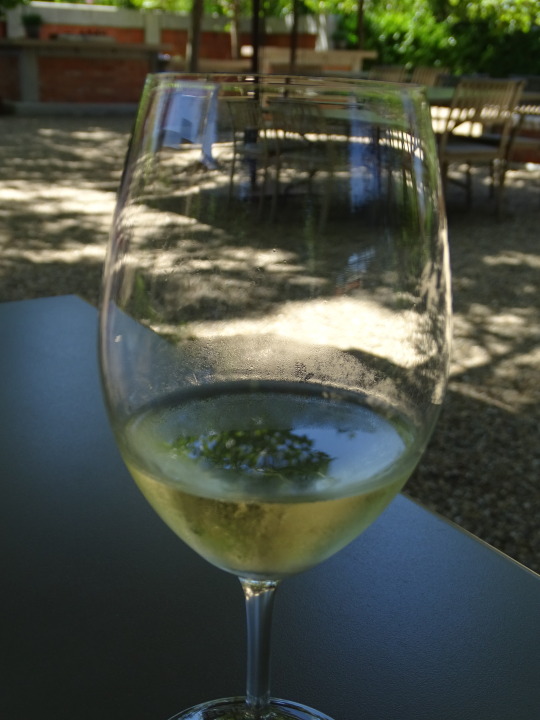

National Pinot Grigio Day
The popular white wine known as Pinot Grigio comes from a mix of Pinot Noir and Pinot Gris. Visit a winery, host a tasting event, or simply enjoy a glass.
If you’re a wine aficionado, you know that there’s nothing quite like the fresh taste of a great vintage of wine to go with an incredible meal. There are so many vintages to choose from it can sometimes be a challenge to find the perfect pairing. Thankfully there’s Pinot Grigio, an incredible wine that’s been known for hundreds of years in the world’s most respected wine regions. Pinot Grigio National Pinot Grigio Day celebrates this astonishing wine and its ability to be paired with just about anything, or just enjoyed on its own.
History of National Pinot Grigio Day
Pinot Grigio has a long history, as we already mentioned above, and shares part of its genetic heritage with Pinot Noir and Pinot Gris. As the years went by it came to be one of the most popular vintages to be grown and produced, with over 15,000 Hectares being used to grow the grape necessary to produce it. If you’ve never had this fine wine and want to know how it tastes, it has been described as having an acidic, lighter-bodied flavor, most of the noted as having a recognizable ‘spiciness’ to them.
Depending on where you’re getting your Pinot Grigio from it may come under a different name, with examples being the Auxerrois Gris from Alsace, the Grauer Monch from Germany, and the Rulander from Romania. While the basic profile of the wine remains the same, there are variations based on where and how its produced that lead to sweeter and drier varieties being available. National Pinot Grigio Day is your opportunity to go out and buy a bottle or ten and start sampling a delicious variety of what the world has to offer in the way of excellent wines.
How to celebrate National Pinot Grigio Day
As we already mentioned there’s no better way to celebrate this day than by getting yourself a fine bottle of Pinot Grigio and pouring it out with some friends. Given that there are multiple varieties of this wine it could be good to schedule a wine tasting where everyone brings a bottle of Pinot Grigio from a different region, to ensure that everyone gets the chance to enjoy the wide world of Pinot Grigio. Don’t let this holiday pass you by without taking the time to appreciate one of viticultures finest products.
Things you can do with Pinot Grigio besides drinking it!
Of course, having a delicious glass of Pinot Grigio is the best way to celebrate this day! However, there are a number of other things that you can do with Pinot Grigio, aside from drinking it. There are so many different recipes that call for Pinot Grigio. So, why not celebrate with a delicious meal incorporating Pinot Grigio and a glass of the wine to wash it down with? Fish dishes always work really well with this type of wine. Nevertheless, there are many other recipes whereby Pinot Grigio can be incorporated.
Did you know that you can use Pinot Grigio in a pie and tart crust? You have probably heard about creating a tender pie crust with vodka. However, you can also use this delicious white wine. The science is very similar. Unlike water, gluten is not created when flour and alcohol or mixed together. If you overwork gluten, baked goods can end up tough. Therefore, you can enjoy a much more tender crust if you use less gluten. Moreover, the touch of Pinot Grigio is going to add a bit of sweetness to the crust as well, so it’s a win-win!
If you’re looking for a great dinner idea to go with your bottle of white wine on Pinot Grigio day, how about a chicken cacciatore? In some countries, the tomato-based version of this dish is more well-known. However, with this version, chicken is served with a white sauce. You can prepare this with red chillis, oil, and garlic. You can then add some olives and a bottle of pinot grigio, cooking it for a long time so that all of the flavors are melded together properly. Ten minutes before you are finished cooking, add plenty of fresh rosemary to the sauce.
If this doesn’t sound like the right dish for you, how about a pasta carbonara? You can add more flavor to your pasta dish by adding a splash of Pinot Grigio to the pan after the pancetta has been sauteed. You won’t look back after trying this version. There is a gamey aftertaste to the smoked pancetta cubes. However, you can get rid of this with the Pinot Grigio, which makes the pure pancetta flavor outstanding. It really takes your dish to the next level, and this is a sort of concept that can be applied to a lot of different dishes when it comes to adding Pinot Grigio.
Last but not least, why not create your own cocktail with Pinot Grigio? Of course, you’re still going to be technically drinking it, but we’ve bent the rules a little bit for this one! There are some amazing Pinot Grigio cocktails on the Internet. Spend some time looking for a recipe you love. One of our favorites is a Hugo Spritzer. To make this cocktail, you will need your favorite Pinot Grigio (or any old bottle!) combined with soda water, elderflower syrup, mint leaves, some wedges of lime, and some ice. It’s a refreshing cocktail, which goes down a treat.
Source
#Long Meadow Ranch - Rutherford Estate#white wine#wine tasting#St. Helena#Louis M. Martini Winery#Beringer Vineyards#Ram's Gate Winery#Sonoma#Freemark Abbey Winery#Napa Valley#Turnbull Wine Cellars#California#St. Francis Winery & Vineyards#West Coast#other white wines than Pinot Grigio too#National Pinot Grigio Day#17 May#USA#NationalPinotGrigioDay#original photography#tourist attraction#landmark
1 note
·
View note
Text









Long Meadow Ranch and Gott's Roadside
In the late 1800’s, the majestic Long Meadow Ranch property thrived with vineyards, apple orchards, olive groves, hay and a goat milk dairy until farming fell dormant during Prohibition. Over the following years, the property became swallowed by the encroaching forest until the Halls bought the property in 1989.
The Hall family carefully breathed life back into the land, nurturing it back to its glory, and then some, by cutting back the abandoned olive trees and replanting the vineyards and apple orchards as you see them growing today. Home to the Mayacamas Estate, the rugged 650-acre landscape nestled in the foothills of the Mayacamas Mountains also gave way to a long, sweeping meadow, thus the name Long Meadow Ranch was born.
Source
#Long Meadow Ranch - Rutherford Estate#1796 St Helena Hwy S#933 Main St#Napa Valley#Napa County#wine country#Bay Area#summer 2022#travel#original photography#vacation#tourist attraction#landmark#architecture#landscape#flowers#excellent food and wine#USA#California#West Coast#Kimchi Burger#Green Chile Burger#Garlic Fries#Gott's Roadside#St. Helena
0 notes
Text
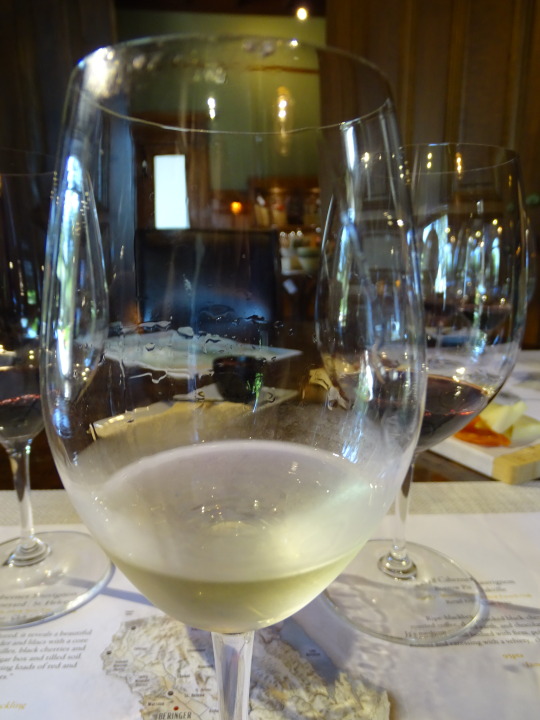
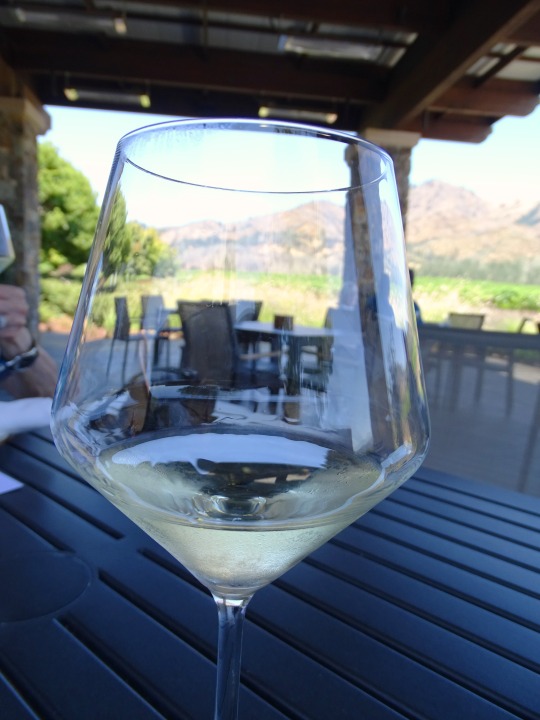

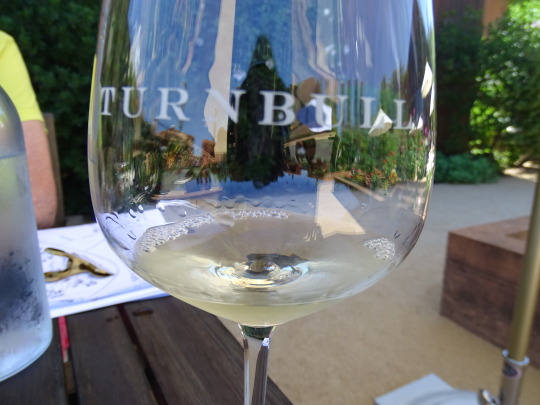


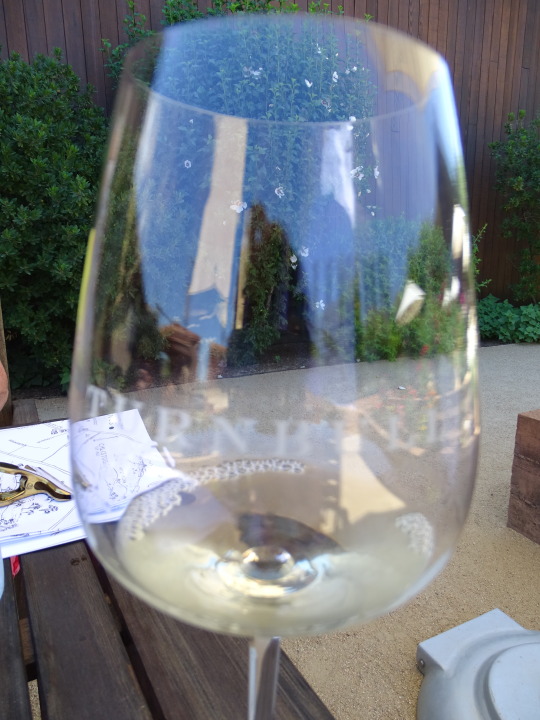

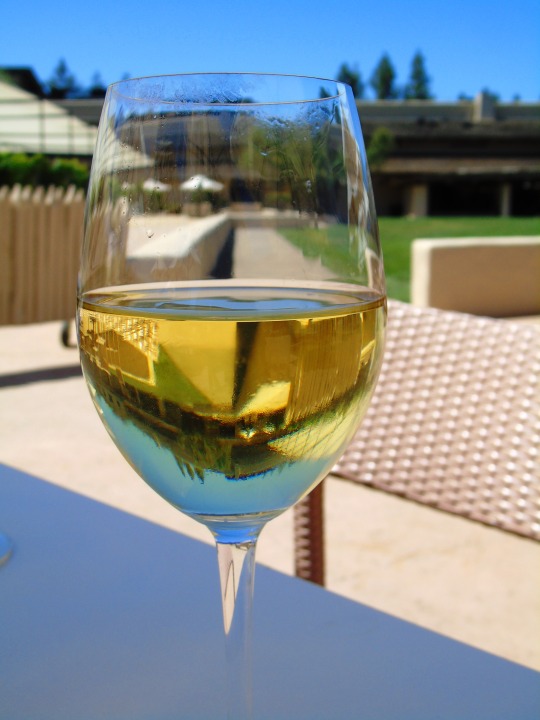
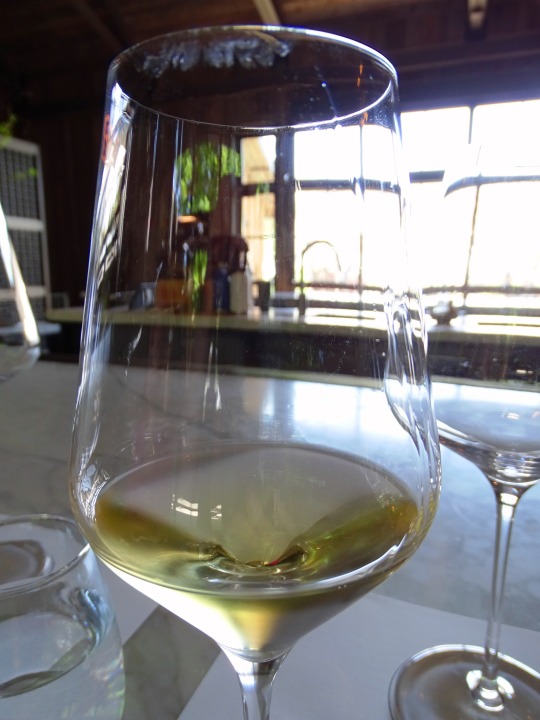
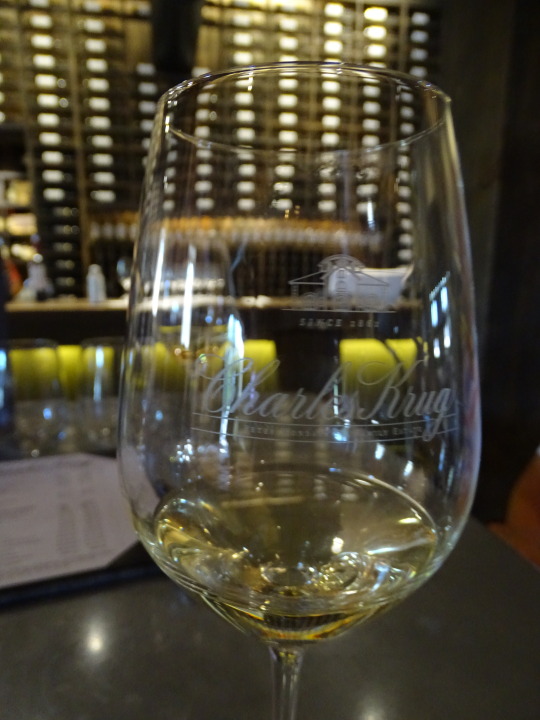
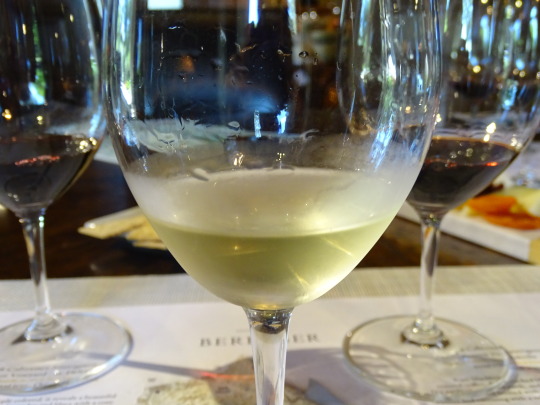
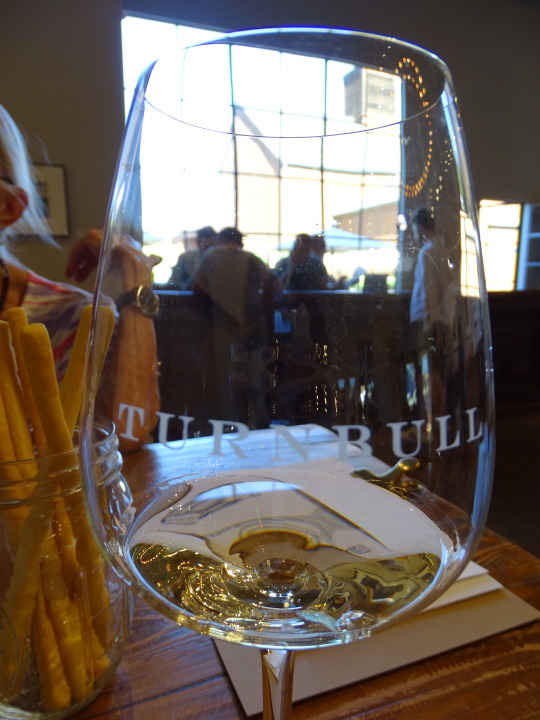
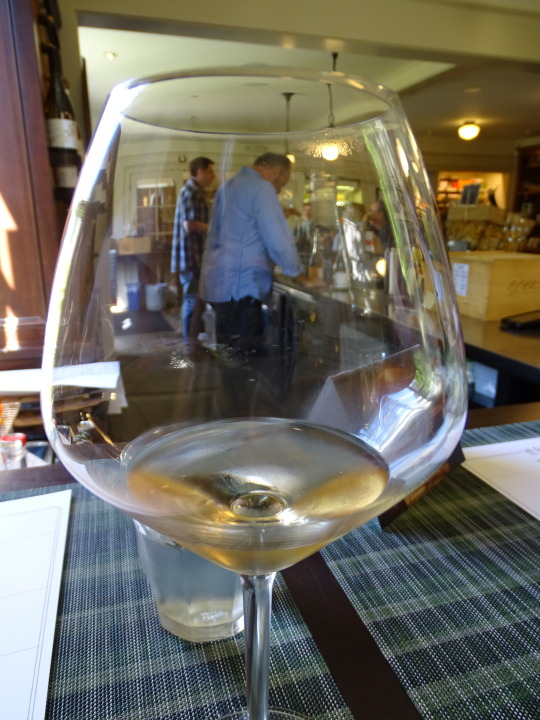
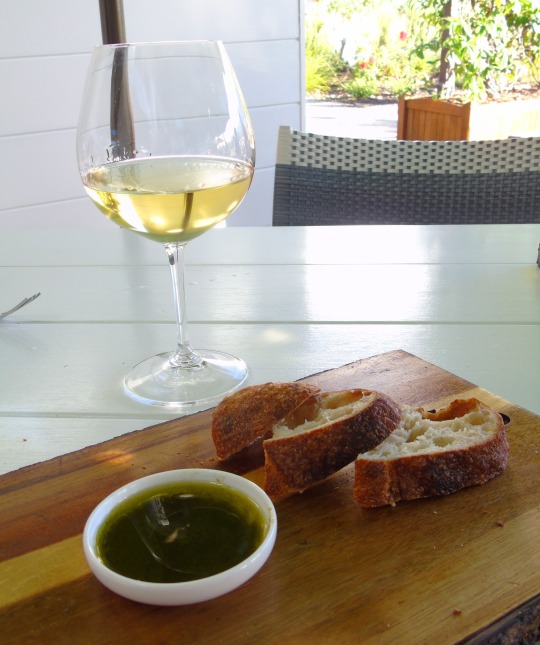
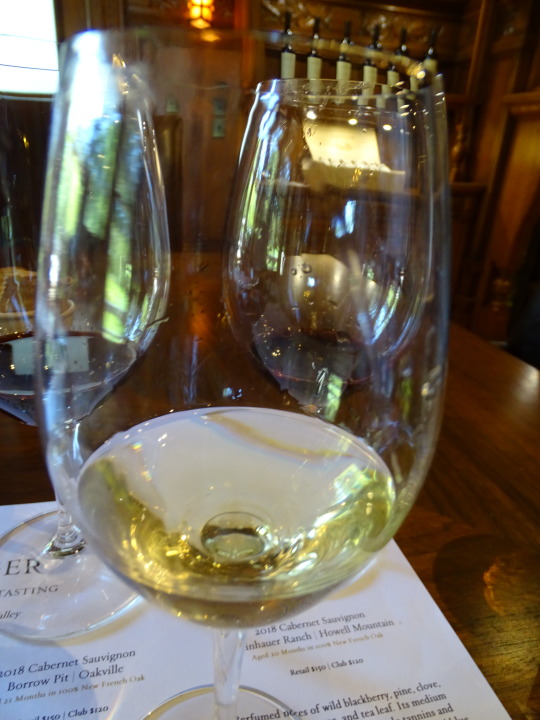
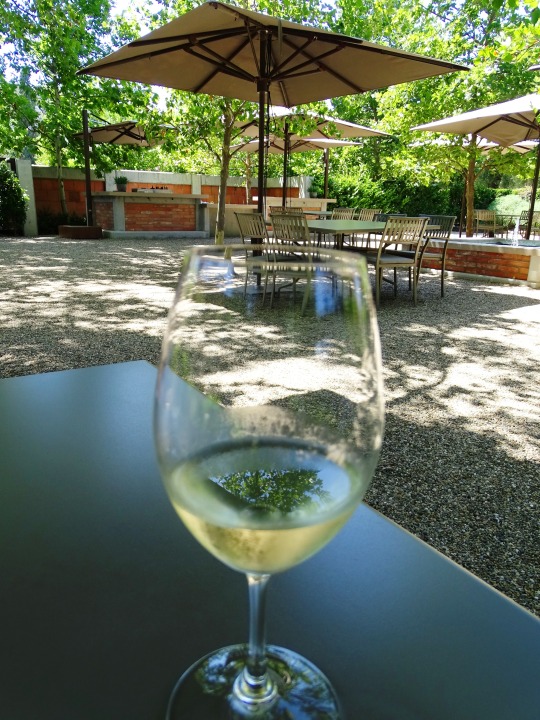

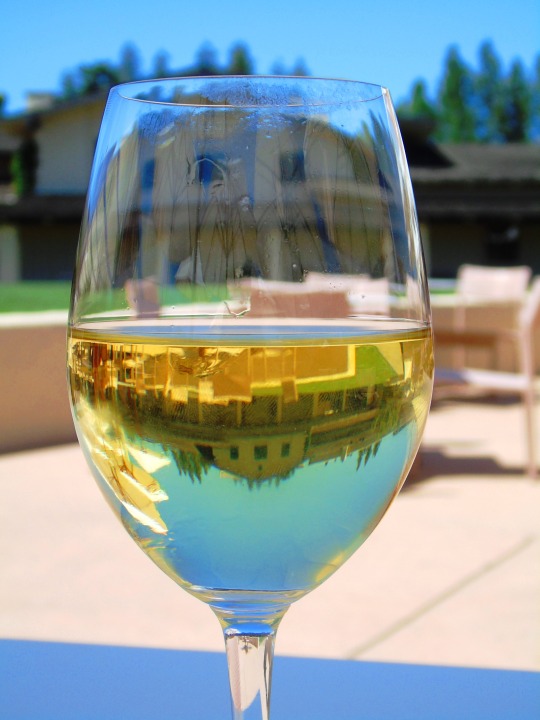


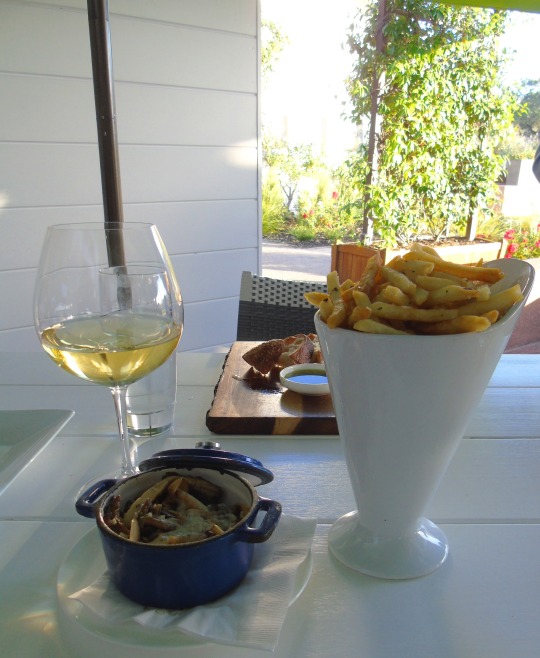
International Sauvignon Blanc Day
The French may have given the world the term terroir – the wonderful alchemy of influences from soil and aspect and climate and winemaking that creates the unique character of a wine – but on the other side of the world, New Zealand winemakers have found their own distinctive ‘magic’ place.
Tūrangawaewae (pronounced: too-runguh-why-why) means "my place" in Māori. It describes a uniquely New Zealand approach to winemaking that includes terroir but also embraces the surrounding landscape, the characteristic climate, and the history and spirit of a place and the people who make it their home.
As a concept that expresses connectedness and belonging to the land, tūrangawaewae is a creative force that is producing exciting new styles of New Zealand Sauvignon Blanc.
The rise of a modern classic
New Zealand is no stranger to innovations in wine. It is the place where a humble vine that grows in southwest France became a wine world superstar. Sauvignon Blanc likely derived its moniker from the french word “Sauvage,” meaning wild, as the vines are reminiscent of wild grapevines. As the adventurous young winemakers who planted New Zealand's first Sauvignon vines in the 1970s discovered, a happy combination of ideal climatic conditions and skilful viticulture and winemaking transformed the sauvage qualities of the grape into the characteristic "green" aromas and mouth-filling tastes of classic New Zealand Sauvignon Blanc.
Success at local and international wine competitions soon followed, along with a chorus of praise from international wine critics. By the early 1990s New Zealand Sauvignon Blanc was established as the global benchmark for the style and now accounts for over 85% of wine exported from New Zealand. It is a remarkable success story that is celebrated around the world every year and 3 May 2024 marks the fourteenth International Sauvignon Blanc Day.
Sauvignon classics to come
Although Sauvignon Blanc is grown throughout New Zealand’s 10 wine regions, the province of Marlborough is its undisputed heartland. Located in the South Island’s northeast where broad alluvial plains rise from the coast and are sheltered by mountain ranges, Marlborough's long and steady cool-climate growing season creates Sauvignons with impressive aromas, distinctive fruit characteristics and extraordinary purity and intensity of flavours.
Like the rest of New Zealand, Marlborough's geographically diverse landscapes are spectacularly beautiful and bountiful, and wine touring here and in every region is enhanced by vibrant communities of artisan producers and excellent restaurants and cellar doors. As you visit world-famous makers of classic Sauvignon in Marlborough and beyond you will also encounter newer producers of emerging styles whose wines are often less overtly powerful but wonderfully complex in the glass. And they are still unmistakably “New Zealand”.
So this International Sauvignon Blanc Day pour yourself a glass of New Zealand and experience our country through pure and vibrant flavours in our wines.
Did you know?
Sauvignon Blanc was commercially produced on our shores for the first time in the 1970s.
It is the country's most widely planted variety, and has established itself as New Zealand's flagship wine the world over.
Nationally, over 25,000 hectares of vineyard land are devoted to growing the grape.
Three-quarters of all Sauvignon Blanc is planted in Marlborough (22k+ ha), followed by Hawke's Bay (1k+ ha) and Nelson (0.6k ha).
Sauvignon blanc comprises 72% of New Zealand’s overall wine production — and it’s 86% of what we export to the rest of the world. Total production - 302,000 tonnes.
It's one of the parent grapes of Cabernet Sauvignon. The other? Cabernet Franc.
Sauvignon blanc is an excellent food-pairing wine. Depending on which style you’re pouring, you can roll with everything from Thai food and grilled chicken to salmon and pasta.
Source
#International Sauvignon Blanc Day#InternationalSauvignonBlancDay#first Friday in May#3 May 2024#Robert Mondavi Winery#Napa Valley#summer 2017#I love the first pic#Brix Restaurant and Gardens#don't drink and drive#olive oil#Beringer Vineyards#California#vacation#landmark#tourist attraction#travel#original photography#USA#Turnbull Wine Cellars#Brix Restaurant & Gardens#Kelleher Family Vineyard#Louis M. Martini Winery#Freemark Abbey Winery#St. Francis Winery & Vineyards#Ram's Gate Winery#Long Meadow Ranch - Rutherford Estate
0 notes
Photo










National White Wine Day
National White Wine Day on August 4 is the perfect opportunity to enjoy a glass of this very versatile drink. White wines make for great apéritifs before a meal, a suitable companion to fish or white meat dishes, and a great accompaniment to dessert. White wine is generally considered to be lighter and more refreshing than red wine and is the preferred alcoholic beverage for millions of people throughout the world. So, whether it is a chardonnay or a sauvignon blanc, National White Wine Day is here and it’s time to relax and treat yourself to a crisp little tipple.
History of National White Wine Day
The origins of wine can be traced back as far as 7500 years ago, in what is now known as Iran. Experts are pretty sure that wine was being drunk long before this but there’s no actual evidence for them to point towards at the moment. By 460 BC it was being consumed in Europe and the Greek physician Hippocrates was prescribing it as a remedy to some of his patients.
During the Roman times, wine featured heavily at expensive banquets and was considered a sign of prestige. It was the Romans who began to produce less sweet versions of white wine as they conquered new territories in the North and cultivated on new land. It was also the Romans who introduced the concept of drinking cool wine in the summer and warm wine in the winter, a practice which many still follow today.
White wine eventually became popular throughout all of Europe, which led to more vineyards throughout the continent. By the 16th century, that popularity haNational White Wine Dayd spread to the Americas, with vines being planted in Mexico, Peru, Bolivia, Argentina, and Chile.
Champagne was created in the 18th century and by the 19th century, it was the drink of choice for the elite. Champagne is only produced in the Champagne province of France, an area that has unique soil due to its sloping landscapes.
The 20th century has seen vines introduced to new places and technological developments that have changed the process of winemaking throughout the world. One thing, though, hasn’t changed, and that’s the people’s love for a glass of white wine. The origins of National White Wine Day are unclear but we do know the best way to celebrate, and that’s with a glass of the good stuff.
National White Wine Day timeline
4100 BC The First Winery
The oldest winery found in a cave in Armenia can be traced back to this period.
1697 Bubbly arrives
The French monk Dom Perignon invented champagne.
1811 A Fine Year
A bottle of Château d'Yquem from 1811 sold for $117,000 in 2011, making it the most expensive bottle of white wine ever.
1857 California Dreamin’
The first commercial California winery, Buena Vista Winery, is founded.
National White Wine Day FAQs
What day is National Chardonnay Day?
National Chardonnay Day is celebrated on the Thursday before memorial day each year.
How many National Wine Days are there?
We currently celebrate 8 different wine holidays on National Today.
How many days is white wine good after opening?
If you are keeping it in the fridge then white wine is usually good for 5 to 7 days.
National White Wine Day Activities
Pour yourself a glass of white
Host a wine tasting evening with friends
Visit a vineyard
There’s no better way to celebrate National White Wine Day than by treating yourself to a glass of white wine. Invite some friends over, pop open a bottle, and savor its unique and refreshing taste.
When it comes to white wine there is such an incredible variety that you’re basically spoilt for choice. Why not host a white wine tasting evening and invite your friends over to sample the different wines available. Score them and the group can collectively decide on their favorite wine.
Become more knowledgeable about white wine by visiting a vineyard and learning more about how it is produced. Many vineyards offer tours of their grounds so you can see what goes into that bottle of wine and of course there will be some wine tasting involved too.
5 Facts About White Wine That Will Surprise You
The Phobia
75 Grapes
Nebuchadnezzar
Temperature is key
If it was a popularity contest
Some people suffer from a phobia of wine, it’s called oenophobia.
It takes approximately 75 grapes to make a glass of white wine. Which means you need 300 grapes for a bottle.
Nebuchadnezzar is the name given to the largest bottle of white wine that you can buy. It’s a 15-liter bottle, which equates to 20 normal-sized bottles.
White wines should be served at a temperature of 45 to 50 degrees Fahrenheit.
Chardonnay is the most popular white wine in the world,
Why We Love National White Wine Day
It’s versatile
The variety
The taste
White Wine is a drink for many occasions. Whether it’s chicken, fish, a dessert, or just a social catch up with friends, a glass of white wine will suit the occasion.
From chardonnay to champagne and everything in between, there is a huge range of different white wines out there and you could spend a lifetime deciding which your favorite is.
Let’s not forget that the main reason white wine is so popular is that it tastes great.
Source
#Ram's Gate Winery#Long Meadow Ranch - Rutherford Estate#St. Helena#Beringer Vineyards#Brix Restaurant & Gardens#Freemark Abbey Winery#St. Francis Winery & Vineyards#Sonoma#Napa Valley#California#USA#travel#summer 2022#Robert Mondavi Winery#Oakville#Yountville#bread#olive oil#original photography#Turnbull Wine Cellars#National White Wine Day#4 August#NationalWhiteWineDay#tourist attraction#landmark#Louis M. Martini Winery
0 notes
Photo










Zinfandel Day
Zinfandel Day is celebrated on November 17 every year, and we’re going to show you how you can indulge in the excitement. Zinfandel is a type of black-skinned grape that is typically used for making wines. The grapes are known for their high sugar content, which is useful for making wines with an alcohol percentage of more than 15%. The Zinfandel, also known as Primitivo, grows best in a warm but not too hot climate. Its taste varies, depending on the ripeness of the grapes. Zinfandel Day was created in the United Kingdom to give recognition to this exquisite variety of grapes.
History of Zinfandel Day
It is said that the Zinfandel grapes were discovered in the Mediterranean region around 6000 B.C. Shortly after that period, winemaking became prevalent. Zinfandel was found in parts of Croatia, but a lot of the plantation was wiped out by the phylloxera epidemic. The Zinfandel’s genetic structure closely resembles that of Primitivo, which was found in Italy in the 1800s. It was first recognized by the European Union that Primitivo would be a synonym for Zinfandel in 1990. Today both Zinfandel and Primitivo are used interchangeably.
In 1930, Zinfandel agriculture was affected greatly, first by the Great Depression and then by the Prohibition that followed. By the 1960s, Zinfandel was already being referred to as the “lost vine and wine.” In 2002, the Crljenak Kaštelanski variety was discovered in Croatia, and winemakers started mixing Zinfandel and Crljenak Kaštelanski. Soon after, the wine production again rose to prominence. The wines were made mostly in parts of Puglia or Lodi (Croatia).
The Zinfandel Advocates and Producers were formed in the United States for “the preservation, education, and appreciation” of the Zinfandel grapes. Zinfandel Day was created to show love and appreciation toward the Zinfandel grape and the wines produced from it, namely Rombauer, Artezin, Pedroncelli, and Robert Biale. Wine lovers also held Zinfandel tasting days in San Francisco. Zinfandel Day quickly spread to Europe, especially the United Kingdom. It became a day of celebrating one of the world’s most favorite vines and wines.
Zinfandel Day timeline
6000 B.C. Zinfandel Grapes are Discovered
Zinfandel grapes are discovered in the Mediterranean region.
1880 Primitivo is Born
Primitivo, a close relative of the Zinfandel grapes, is found in Italy.
1930 Zinfandel is Almost Extinct
Zinfandel production suffers greatly because of the Great Depression and Prohibition.
1990s Zinfandel Day
Zinfandel Day is created by the Zinfandel Advocates and Producers (ZAP), to honor Zinfandel grapes and the wines made from them.
Zinfandel Day FAQs
How many wine days are celebrated?
There are about 17 national wine day celebrations — from simple wine-drinking days to more specific wine celebrations such as Mulled Wine Day, Zinfandel Day, and Sauvignon Blanc Day.
What does Zinfandel wine taste like?
The taste of the Zinfandel wines depends on the ripeness of the grapes. It might be sweet, semi-sweet, or dry.
What is the difference between Merlot and Zinfandel?
Merlot adds a plummy flavor to the wine. Zinfandel has a rich blackberry/raspberry or pepper flavor and is less bitter compared with the Merlot.
Zinfandel Day Activities
Drink Zinfandel wines
Share it on social media
Read more about Zinfandel grape history
What better way to celebrate Zinfandel Day than to taste some exotic Zinfandel wines? Pour yourself a glass of Zinfandel wines such as Rombauer or Artezin and enjoy the juicy, sweet taste of Zinfandel grapes. Enjoy your drink with friends and family.
Let everyone know that you're celebrating this day. Take pictures of you enjoying some Zinfandel wine with friends and share them on social media. You can also write articles on the origins of Zinfandel grapes and post them online.
Use this day to improve your knowledge. Read more about the historical origins of the Zinfandel grapes — how they were discovered, and how they became one of the most loved grape varieties among wine lovers.
5 Facts About Zinfandel That Will Blow Your Mind
It is used in cranberry sauce
It is a heritage grape
It has wings
White Zin was created in 1972
Austria brought Zinfandel to the U.S.
Zinfandel grapes are sometimes used to give the cranberry sauce a spicy flavor.
The Zinfandel grape is considered by the people of California to be their heritage grape.
The Zinfandel grapevine always has a side branch growing outwards that gives an appearance of a wing.
White Zin was created by the Sutter Home in 1972.
It is said that the Zinfandel was brought to the U.S. by Croatia, under Austrian rule.
Why We Love Zinfandel Day
We appreciate Zinfandel grapes and wines
It gives us an occasion to come together as a family
We improve our knowledge
Zinfandel grapes are some of the most popular grape varieties on the planet. Yet, we feel as though they do not get the recognition they deserve. Zinfandel allows us to appreciate this magnificent variety of grapes and the tasty, high-quality wines produced from them.
This day is to be celebrated with friends and family. Zinfandel Day gives us the chance to invite neighbors or family members over for a few glasses of Zinfandel wines, and a chance to bond with each other.
This is also a day of learning. This day allows us to learn more about the origins of Zinfandel grapes and wines. We learn about how the zinfandel grape almost went to extinction but survived and became one of the most popular red wine grapes on the planet.
Source
#Ram's Gate Winery#Sonoma Valley#Napa Valley#California#wine tasting#USA#don't drink and drive#St. Francis Winery & Vineyards#Beringer Vineyards#Freemark Abbey Winery#Cabernet Sauvignon#Merlot#Turnbull Wine Cellars#Louis M. Martini Winery#Cline Family Cellars#Brix Restaurant & Gardens#Long Meadow Ranch - Rutherford Estate#HALL Wines St. Helena#Zinfandel Day#17 November#ZinfandelDay
1 note
·
View note
Photo










National Red Wine Day
Pour a lovely glass of Bordeaux, take a sip of a Cabernet Sauvignon or open a bottle of Shiraz because it’s time for National Red Wine Day!
History of National Red Wine Day
National Red Wine Day is an ideal time to take a look at the past of the red wine industry and see how it developed into modern times.
Wine’s history goes back several thousand years. It is estimated that Chinese people in the Henana province may have been the first ones to create something like red wine, perhaps around 7000 BC. This would have been a drink that was made of wild grapes as well as honey and rice as well as hawthorn fruit. The concoction was stored in clay jars with yeast on the skins causing it to be fermented.
The history of wine continues through the centuries. A recent discovery in 2007 in Armenia dates the first winery in the world at around 6100 BC. This earliest, prehistoric form of wine production took place in a cave was discovered by archaeologists from Armenia as well as Ireland.
Since ancient times, red wine has been part of many cultures throughout the world. As civilization has developed, so has the technology for growing the right grapes and turning it into this delicious beverage. Through the old world and the new world, red wine has come to be more than simply a drink, but it also symbolizes transformation, happiness and friendship, as well as sustenance and life.
National Red Wine Day symbolizes all of these and more. It was founded in 2014 by Jace Shoemaker-Galloway with the idea of celebrating the beauty of magnificence that is red wine. As the grapes begin to ripen and autumn begins to loom large, National Red Wine Day offers a time to enjoy and celebrate.
National Red Wine Day Timeline
6000 BC Red Wine is made in South Caucasus
People in Georgia discover that red wine can be made by burying grape juice underground during the winter.
3100 Ancient Egyptians make wine
Early versions of red wine are made from red grapes in ancient Egypt, coming along with superstitions about red wine as it resembles blood.
71 AD Bordeaux Wines are first recorded
Pliny the Elder makes the first written recorded evidence of vineyards in Bordeaux, which is in modern-day France.
1619 French grape cultivation begins in Virginia
Bringing their grapevines from France, the French cultivate their grapes in Virginia.
2014 National Red Wine Day begins
Founded by Jace Shoemaker-Galloway, the first Red Wine Day is celebrated on August 28 of this year.
How to Celebrate National Red Wine Day
Enjoying and celebrating National Red Wine Day is really no trouble at all! Don’t forget to share the experience with family and friends. Try out some of these ideas to make the most of National Red Wine Day:
Drink a Glass of Red Wine
If this isn’t the perfect day to enjoy a glass of red wine, then what is?! Whether opening up a bottle of Merlot to enjoy at home with dinner, or going out to order a glass of Cabernet Sauvignon, National Red Wine Day offers a special opportunity to pay honor to this alcoholic beverage that is both ancient and modern.
Head Out to a Wine Tasting or Vineyard (or Both!)
National Red Wine Day is the ideal time to schedule a trip to wine country to enjoy a tour or a wine tasting. A visit to a vineyard would be amazing, whether it is Texas Hill Country, Arizona’s Valle Verde or Northern & Central Virginia where grapes for America’s first red wines were originally grown. Of course, California produces about 80% of the wine in the United States, so Sonoma County, Napa Valley, Santa Barbara County and Edna Valley might make the visit to a vineyard even more accessible.
Learn More About Red Wine
Use National Red Wine Day to celebrate and take advantage of opportunities to learn more about this unique beverage. A nice way to start might be to learn a bit about the different kinds of red wine. Take a look at these varieties and try one out in honor of the day:
Merlot
Cabernet Sauvignon
Malbec
Pinot Noir
The second most planted grape in the world, Merlot is an easy wine to drink. It’s rather fruity and has a wide range of flavors, from black berries and black cherries to plums and cocoa, from herbs and graphite to vanilla and cedar. It’s a versatile wine that is great for beginners to enjoy and experience. Merlot is a red wine that is lovely to drink while eating poultry such as chicken or duck.
This is the most planted grape on the planet and it is easy to see why it is so beloved. Cabernet is a fairly safe wine that is easy to share at a table because almost everyone will enjoy it. It might have a fruity taste, with French versions showing as a bit more herby. Cabernet Sauvignon is a red wine that is great when paired with meats.
While the grapes for Malbec wine were originally grown in France, most of this variety that is produced today comes from Argentina. With its deep purple color and fruity flavors of plum and cherry, many people enjoy the ending flavors that offer a hint of smoke. Malbec is a red wine that goes well when paired with lean meats as well as with spicy foods like Indian or Mexican.
This delicate red wine offers a lighter body that is less shocking and pushy. It has a silky feel in the mouth and often has a bright berry taste, similar to raspberries or cranberries. Pinot Noir is a red wine that, surprisingly, is delicious when paired with fish, like salmon dishes or sushi.
Make a Playlist of “Red Wine” Songs
Try out some of these red wine themed songs to create a playlist in honor of National Red Wine Day:
Red, Red Wine by UB40 (1983). This classic eighties classic song is typically remembered for its funky sound, but it’s actually a cover from a Neil Diamond Song from 1967.
Melva’s Wine by Johnny Cash (1972) A country music song by musical legend Johnny Cash, Melva’s Wine is a song remembering the batch of wine made by a woman from the singer’s past.
Old Red Wine by The Who (2004). Written by Pete Townsend in memory of John Entwistle who had been a bass player for the band. Entwistle, who died in 2002 just before this song was written, was a lover of red wine.
Cherry Red Wine by Luther Allison (1995). A blues bass guitarist, Luther Allison plays and sing this song that is mostly a blend of his super fantastic guitar riffs and some minimal lyrics.
National Red Wine Day FAQs
Is red wine good for you?
Drinking an occasional glass of red wine might be healthy, with antioxidants that protect against heart disease and inflammation.
How many calories in a glass of red wine?
A 100 gram glass of red wine contains approximately 85 grams.
Can red wine go bad?
An unopened bottle of red wine can last 2-3 years past the expiration date printed on the bottle.
Does red wine need to be refrigerated after opening?
Yes! Refrigerating red wine slows down the chemical processes that make wine spoil.
Is red wine keto?
People on a keto diet can drink a very dry red wine in moderation on their keto diet.
Source
#Beringer Vineyards#Kelleher Family Vineyard#Freemark Abbey Winery#USA#Cline Family Cellars#St. Francis Winery & Vineyards#Buena Vista Winery#Napa Valley#Sonoma Valley#Turnbull Wine Cellars#Louis M. Martini Winery#wine tasting#summer 2022#original photography#California#travel#vacation#Brix Restaurant & Gardens#Long Meadow Ranch - Rutherford Estate#National Red Wine Day#28 August#NationalRedWineDay#Cabernet Sauvignon#Merlot#Pinot Noir
0 notes